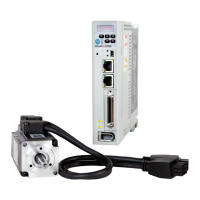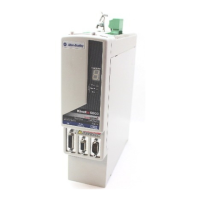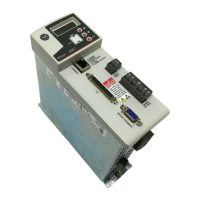Rockwell Automation Publication 2198-UM001I-EN-P - May 2019 67
Connector Data and Feature Descriptions Chapter 4
Understand Control Signal
Specifications
This section provides a description of the Kinetix 5500 digital inputs, Ethernet
communication, power and relay specifications, encoder feedback
specifications, and safe torque-off features.
Digital Inputs
Two digital inputs are available for the machine interface on the IOD
connector. Digital inputs require a 24V DC @ 15 mA supply. These are
sinking inputs that require a sourcing device. A common and cable shield
connection is provided on the IOD connector for digital inputs.
The Registration 1 input is capable of dual functionality. You can also use this
as the Home input. Configuration for dual functionality is not needed.
Table 27 - Understand Digital Input Functions
Table 28 - Digital Input Specifications
IMPORTANT To improve registration input EMC performance, refer to the System Design
for Control of Electrical Noise Reference Manual, publication GMC-RM001
.
Function Description Default Behavior
Home/Reg1
An active state indicates to a homing sequence that the referencing
sensor has been seen. Typically, a transition of this signal is used to
establish a reference position for the machine axis.
The function is always inactive. You can enable in the Logix
Designer application.
Registration 1 An inactive-to-active transition (also known as a positive transition) or
active-to-inactive transition (also known as a negative transition) is
used to latch position values for use in registration moves.
Registration 2
Positive overtravel
Negative overtravel
The positive/negative limit switch (normally closed contact) inputs for
each axis require 24V DC (nominal).
Attribute Value
Type Active high, single-ended, current sinking (EN 61131-2 Type 1)
Dedicated functions Registration 1, Home, Registration 2, Positive overtravel, Negative overtravel
Input current (with 24V applied) 12 mA, typical
On-state input voltage 15…30V @ 15 mA, max
Off-state input voltage -1.0…5.0V
Pulse reject filtering (registration functions) 12.0 μs
Pulse reject filtering (home input function) debounce filter 20 ms, nom
Propagation delay (registration functions) 0 (delay compensated)
Registration accuracy ±3 μs
Registration repeatability 700 ns
Windowed registration invalid-to-valid event delay 125 μs, min

